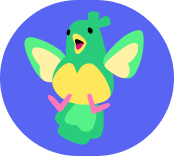21st century grade 11
Cards (21)
- Illustrated Novel
- Story through text and illustrated images
- 50% of the narrative is presented without words
- The reader must interpret the images to comprehend the story completely
- Textual portions are presented in traditional form
- Some illustrated novels may contain no text at all
- Span all genres
- Illustrated Novels
- The Invention of Hugo Cabret by Brian Selznick
- The Arrival by Shaun Tan
- Digi-Fiction
- Triple Media Literature
- Combines three media: book, movie/video and internet website
- To get the full story, students must engage in navigation, reading, and viewing in all three forms
- Digi-Fiction
- Patrick Carman's Skeleton Creek
- Anthony Zuiker's Level 26
- Graphic Novel
- Narrative in comic book formats
- Narrative work in which the story is conveyed to the reader using a comic form
- The term is employed in broadly manner, encompassing non-fiction works and thematically linked short stories as well as fictional stories across a number of genres
- Graphic Novel
- Archie Comics by John Goldwater and illustrator, Bob Montana
- Manga
- Japanese word for comics
- Used in the English-speaking world as a generic term for all comic books and graphic novels originally published in Japan
- Considered as an artistic and storytelling style
- Manga
- Shonen- Boy's Manga (Naruto, Bleach, One Piece)
- Shojo- Girl's Manga (Sailormoon)
- Seinen- Men's Manga (Akira)
- Josei- Women's Manga (Loveless, Paradise Kiss)
- Kodomo- Children's Manga (Doraemon, Hello Kitty)
- Doodle Fiction
- Literary presentation where the author incorporates doodle writing, drawings and handwritten graphics in place of the traditional font
- Drawing enhances the story, often adding humorous elements
- Doodle Fiction
- The Diary of a Wimpy Kid by Jeff Kinney
- Timmy Failure by Stephan Pastis
- Text-Talk Novels
- Blogs, email and IM format narratives
- Stories told almost entirely in dialogue simulating social network exchanges
- Chick Lit or Chick Literature
- Genre fiction which addresses issues of modern womanhood, often humorously and lightheartedly
- Chick Lit typically features a female protagonist whose femininity is heavily thermalizing in the plot
- Chick Lit or Chick Literature
- Scarlet Bailey's The night before Christmas
- Miranda Dickinson's It started with a Kiss
- Flash Fiction
- A style of fictional literature of extreme brevity
- There is no widely accepted definition of the length and category. It could range from word to a thousand
- Six-Word Flash Fiction
- Ernest Hemingway: For sale: baby socks, never worm.
- Margaret Atwood: Longed for him. Got him, Shit.
- Creative Non-Fiction
- Also known as literary non-fiction or narrative non-fiction
- A genre of writing that uses literary styles and techniques to create factually accurate narratives
- Contrasts with other non-fiction, such as technical writing or journalism, which is also rooted in accurate fact, but is not primarily written in service to its craft
- As a genre, creative non-fiction is still relatively young and is only beginning to be scrutinized with the same critical analysis given to fiction and poetry
- Creative Non-Fiction
- 1000 Gifts by Ann Voscamp
- Wind, Sand, and Stars by Antoine de Saint-Exupery
- Science Fiction
- Is a genre of speculative fiction dealing with imaginative concepts such as futuristic science and technology, space travel, time travel, faster than light travel, a parallel universe and extra-terrestrial life
- Often explores the potential consequences of scientific and other innovations and has been called a "literature of ideas"
- Science Fiction
- Suzanne Collins' Mockingiay
- Sarah Maas' Kingdom of Ash
- BlogA weblog, a website containing short articles called posts that are changed regularly
- Hyper Poetry
- Digital poetry that uses links and hypertext mark-up
- It can either involved set words, phrases, lines, etc. that are presented in variable order but sit on the page much as traditional poetry does, or it can contain parts of the poem that move and transform
- It is usually found online, through CD-ROM and diskette versions exist. The earliest examples date to no later than the mid-1980's
